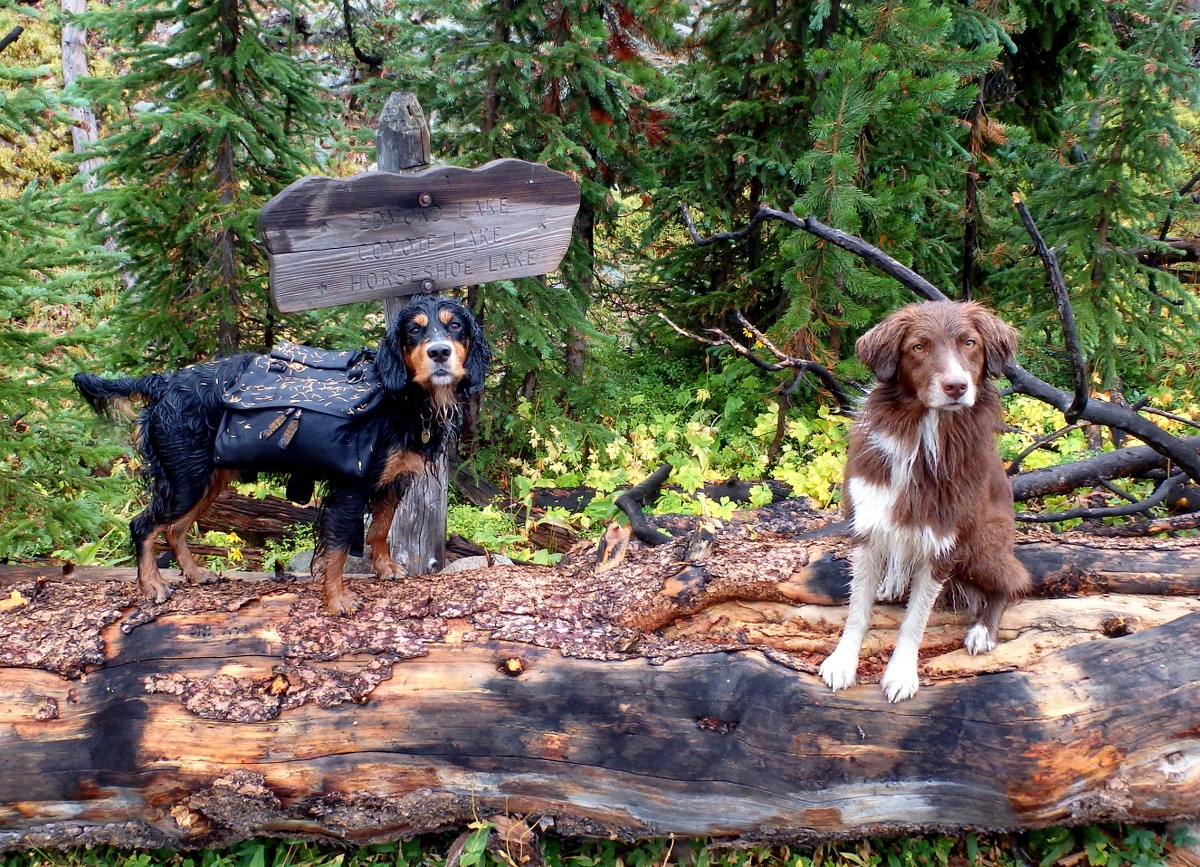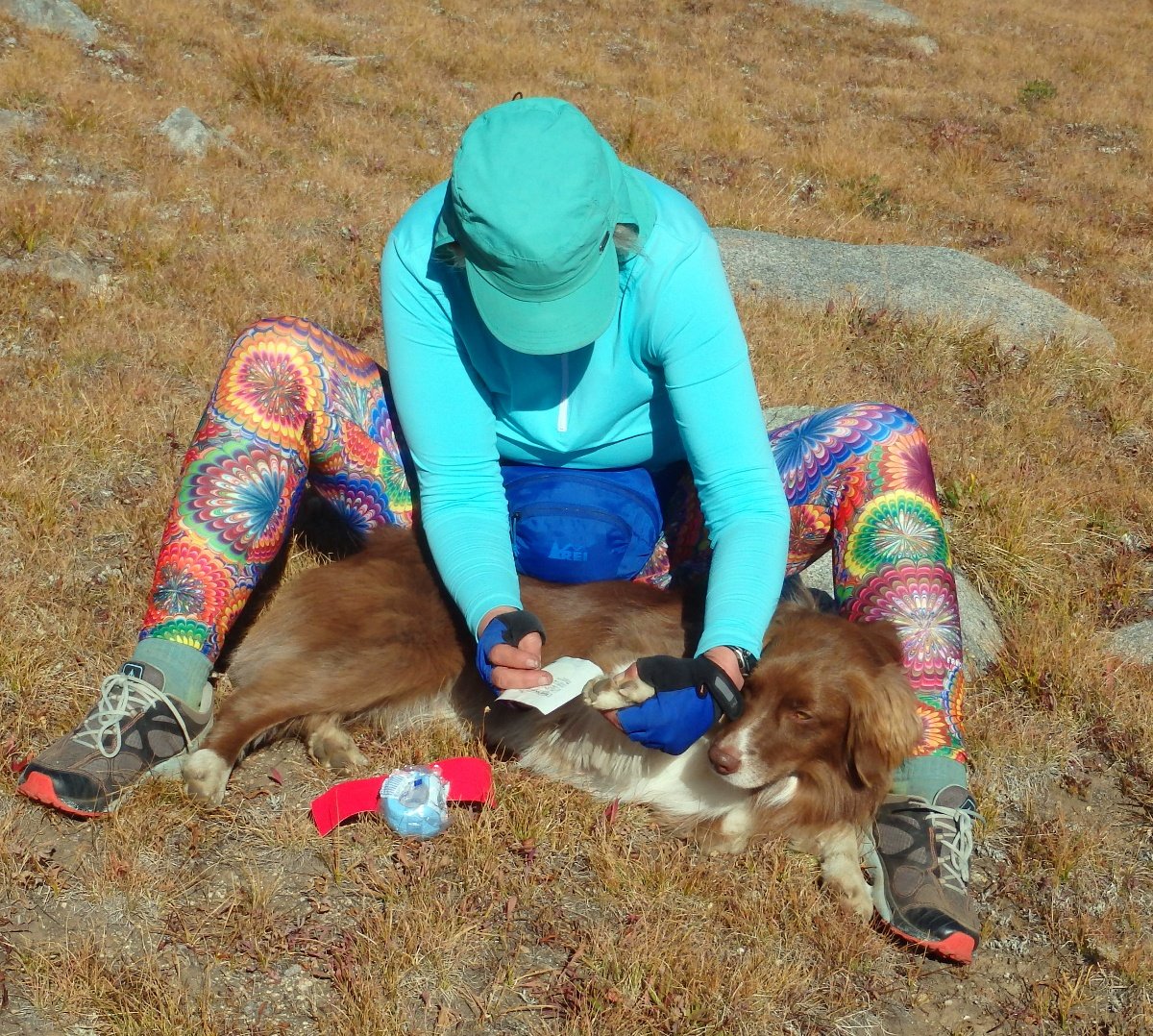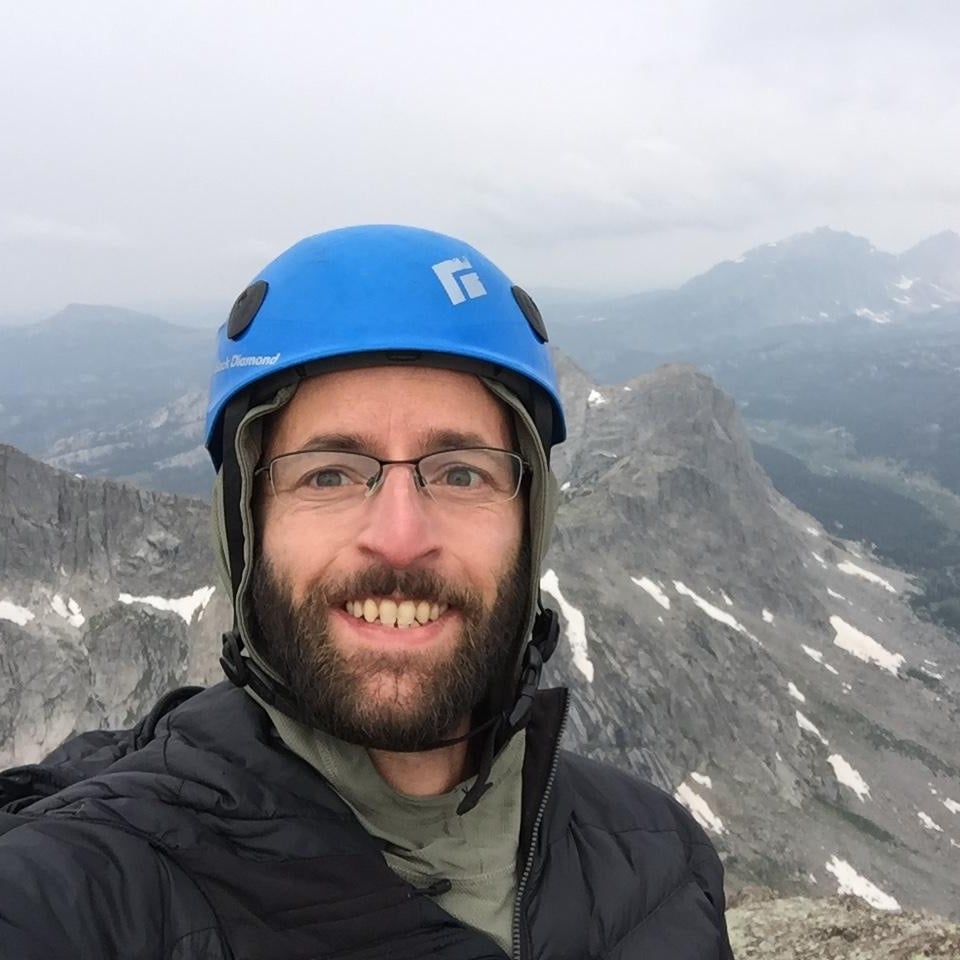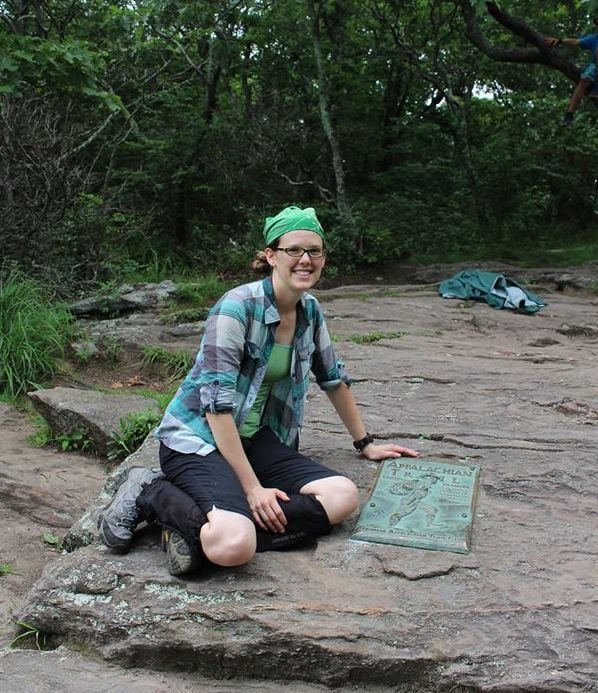
“Wound care is wound care, regardless of the type of mammal. I find that knowing the patient assessment system and other treatment principles is helpful, even with a dog. Pup has diarrhea? Palpate the abdomen to see if there’s specific tenderness. Dog is lethargic? Consider ‘ins and outs’ and if that’s affecting energy level. Reluctant to use an extremity? Try a usability test.” - Missy White, NOLS Instructor
Assisting your companions in the outdoors is why we train in wilderness medicine. So what happens when those companions aren’t human?
It turns out that many of the same skills that we use to assess and treat people can be used when pets need first aid.
We know that because a few of our own graduates and instructors have found themselves in that situation.
Below are their stories about adapting wilderness medicine skills to care for pets—read on and keep them in mind the next time you might need to help a non-human friend:
Delilah the Swan: Preventing Hypothermia

It was exceptionally cold in Akron, Ohio. With the wind chill, temperatures were hovering around -5° F.
While we were out for a trip, my parents’ pet swan Delilah made herself comfortable outside their garage door as she waited for us to return. As Delilah slept, warming the ground underneath her, the snow around her melted with her body heat, and then re-froze, trapping her feet and the feathers on her belly in ice.
When we came home, we found her frozen to the ground. She tried to free herself but couldn't. We poured warm water around Delilah to melt the ice, but this alarmed her so much that she frantically pulled herself out of the ice, leaving behind a mess of blood, feathers and skin.
Delilah was scared, and we couldn’t get close enough to treat her wounds. It was midnight and she was exposed, so I was most worried about hypothermia (the temperature was dropping and the wind was picking up).
We decided to create a hypo-fort around the agitated swan, using theprinciples of a hypothermia wrap that might be used for a human. First, we put down a tarp and then cut pieces of cardboard to insulate Delilah from the ground. Next, we blocked her from the wind, using folding tables, and secured another tarp over the top. Finally, we gave her a mountain of food and boiled water for her to drink, replacing it throughout the night as it cooled.
Miraculously, Delilah made it through the night and her bleeding stopped. Without my training as a WFR and real life experience using a hypo wrap to warm someone, I might not have thought of all the components (insulation from the ground, wind and vapor barrier, calories, and water) needed to save a life in extreme temperatures.
- Kelly Sloan, NOLS Wilderness Medicine Instructor
Notes from NOLS on hypothermia
An effective hypothermia wrap limits heat loss from convection, conduction, radiation, and evaporation. This means building something to reduce the impacts of wind, to insulate the patient from contact with cold surfaces, to trap the heat they are generating, and to ensure they are dry.
Dog Blisters in the Winds

This fall, a friend and I and our two dogs were on a weeklong backpacking trip in Wyoming’s Wind River mountains. Several days into the hike, my hiking companion’s 5-year-old Australian shepherd Ziba started favoring her front paw.
We found that the pads on her paw were starting to crack (like blisters for a person). Although Ziba spends a lot of time outside at home, she wasn't used to hiking all day on the rocky trails of the Winds.

We tried several treatments. A commercial protective boot for dogs didn’t work; Ziba wasn’t used to it and continually chewed at it. Various padding and wrapping techniques didn’t hold up for long on the rough trail.
Finally, we found that KT Tape was the only thing that had enough sticking power to stay on a dog’s pad. This provided enough protection for the foot that we were able to walk another day and a half out to the nearest trailhead.
- Judith Strom, NOLS parent
Notes from NOLS on blister care
Once a blister or wound is formed, your goal is to protect the area from further damage. KT Tape is intrinsically flexible, adhesive, and tough. It is particularly useful for curved or shaped areas.
Huck Gets Hit by a Car (and Lives!)
It was about an hour before sundown, and I was walking Huck, my yellow lab who was about three at the time. He was off-leash as we walked through a patch of familiar woods in Pennsylvania. I didn’t have a first aid kit or headlamp; we weren’t planning on being out long.

Huck took off, sprinting into the forest. I admit, I wasn’t too concerned. About ten minutes passed, and he hadn’t come back yet. I was just starting to consider giving a whistle when I heard the unmistakable sound of car brakes screeching—I guess we were closer to a road than I thought.
I ran to the edge of the woods, arriving just in time to see Huck limping back into the trees. The driver tried to apologize. I knew that Huck might have a life threatening emergency; his rib cage was exactly BMW bumper height.
When I found Huck, he was obviously traumatized. I tried to approach him, and he ran. Not wanting to make his heart beat any faster, I pursued him at a slow walk, running through a mental list of possible problems: broken rib, multiple broken ribs, pneumothorax, head injury, severe bleeding.
Finally, after the sun had set, Huck collapsed and curled up under a thorn bush. I crept up next to him, and began the best patient assessment I could do, in the dark, with a patient I couldn’t communicate with verbally. His airway was open. His breathing was labored. His chest wall felt stable. A blood sweep revealed warm, sticky blood, but with a furry animal, it was hard to tell how much he was actually bleeding. I knew I needed to get him to light, and probably to a vet.
Once I got him indoors, I could see that he wasn’t actively bleeding any more. The inside of his lip was pink, so he wasn’t in shock. His breathing was still labored, though, and he had one heck of a limp. The vet did many of the same assessments I had done, validating the training from my NOLS WEMT course. The vet's verdict was open airway, adequate breathing, good circulation, able to walk—their recommendation: I should take Huck home and let him rest.
Huck was skittish for a couple of days, but then returned to his usual self. Other than a missing patch of fur on his shoulder, he doesn’t seem any worse for the wear. And now when I take him out at dusk, I always bring a headlamp.
This episode confirmed for me that even in an unanticipated scenario, if I stay calm and do my best to adapt the principles I was trained in, I can do a lot of good for my patient, human or canine.
- Dave Durant, NOLS Instructor
Notes from NOLS on patient assessment
The Patient Assessment System provides a thorough, structured approach to managing an emergency and doing an assessment. This ritual also helps rescuers calm themselves while they work through the initial stress of the situation, especially when someone they care about is sick or injured.
Learn adaptable wilderness medicine skills to treat both your human and animal companions.
Editor's note: Post updated 3/27/19
Written By
Ben Lerman
Ben is the former NOLS Wilderness Medicine Marketing Coordinator and a Wilderness First Responder graduate. He enjoys rock climbing, backpacking, kayaking, and hopes to someday adventure in the mountains on each of the 7 continents.




